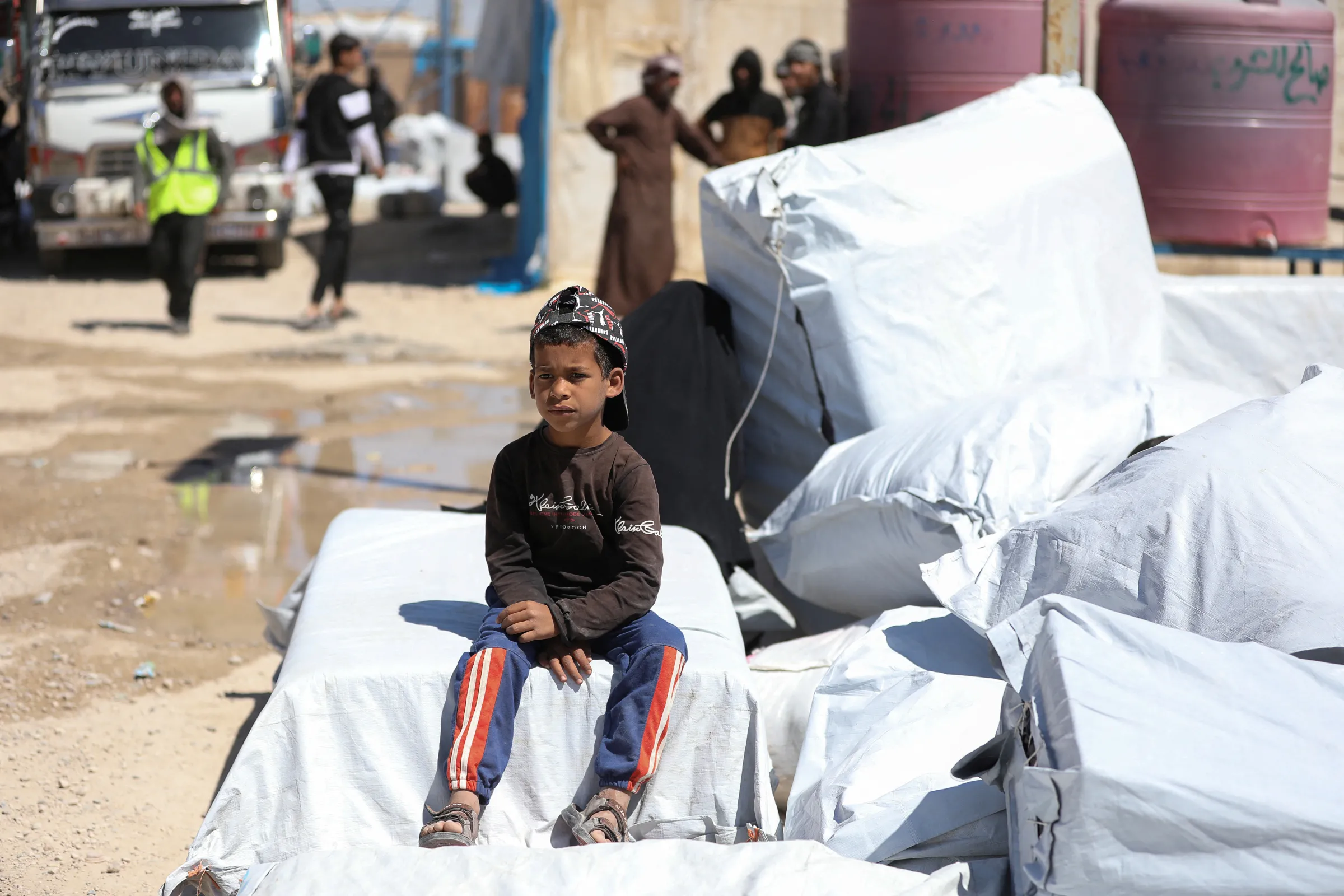A lot has changed, but we cannot rebuild without investing in the next generation.
Syria is changing but its children need international help now

A child rests on belongings, as some families prepare to leave the al-Hol refugee camp to go back to their hometowns, in al-Hol, Syria, April 27, 2025. REUTERS/Orhan Qereman
More than 7.5 million Syrian children need aid with many chronically malnourished. But as needs soar, funding is drying up.
Bujar Hoxha is country director for Save the Children Syria
About six months into its political transition, Syria is shifting. But the needs facing children remain enormous and addressing them must be central to any vision for Syria’s future. A lot has changed, but we cannot rebuild without investing in the next generation.
I’ve worked in humanitarian emergencies for over 26 years, including more than a decade responding to needs in Syria.
But only in the last six months, as we have finally been able to travel around the whole country, have I seen the full picture of what childhood has become here. It is shaped not only by violence, but by hunger, displacement, and neglect.
And unless we act now, it will also be shaped by the world’s failure to invest in children’s futures.
‘Apocalyptic' destruction
In Damascus, life feels frozen in time. Crumbling infrastructure and rolling blackouts. Children line the streets selling tissues as the economic collapse means families are unable to afford food, school fees, or healthcare.
Just minutes outside the capital, the destruction is apocalyptic with ruined buildings and rubble stretching as far as the eye can see. These are the same images that became synonymous with Syria during the war.
What the footage didn’t show are the families still camped outside their destroyed homes, more than 10 years later, without running water or electricity.
I understand what it means to live through conflict.
I was a child refugee during the war in Kosovo, forced from my home, deported by train, and held behind fences with thousands of others.
I worked on the streets selling cigarettes to support my family. I know child labour not as a statistic, but as survival. But I also know the difference humanitarian support can make. When aid workers reached us, they helped restore our dignity and our future.
Chronic malnutrition
Over 16 million people in Syria, including more than 7.5 million children - nearly one third of the population - need humanitarian aid, the highest number recorded since the war began.
Over 2.4 million children are out of school, according to the United Nations. Hunger is worsening, with an estimated 650,000 children under five chronically malnourished, according to nutrition data. In the past year alone, more than 180 children have been killed or injured by landmines and explosive remnants of war.
Hunger is worsening, with an estimated 650,000 children under five chronically malnourished
These dangers are compounded by another threat: the international community’s failure to prioritise children’s needs.
Just as needs reach record highs, funding is drying up.
Hospitals shut, services cut
Across Syria, hospitals have shut, nutrition centres have closed, and vital child protection services are being cut as the United States and other donors reduce global aid.
In one of our maternity and paediatric hospitals in northwest Syria, where nearby facilities have shut down, the number of children needing care has tripled in a matter of months, placing immense pressure on already overstretched services.
Foreign aid cuts are also hitting the camps of Al Hol and Roj in northeast Syria. These two sites hold about 40,000 people, mostly women and children, the families of foreign fighters.
Nearly two-thirds of those in the camps are under 18, and many rely entirely on humanitarian agencies for food, education and protection.
With services now under threat, children risk losing the little stability they have.
“If they close the school, I will be deprived of my right to education,” 14-year-old Safiya told us.
These are not places for children to grow up.
I met Amina*, 19, and Zahra*, 12, two sisters from Bosnia who have spent most of their childhoods in the camps. Their friends have been repatriated, but they are still waiting, confused.
Foreign governments must take urgent action to bring children like them, their citizens, home.
For Syrian families, new opportunities are opening to leave the camps and return to their towns and villages, but this must be done safely, voluntarily, and with sustained support.
There is still time to act. Syria’s future will not be written solely in political agreements or reconstruction plans. If we want peace to last, we must invest in children now. That means restoring education, ensuring they are safe from hunger and harm, and supporting families to rebuild their lives with dignity.
This is a pivotal moment.
For the first time in years, there is movement, possibility. But momentum alone is not enough, especially not for a child living in a tent, out of school, or suffering from malnutrition, Syria is changing. Let’s make sure that change starts with its children.
*Names have been changed to protect anonymity.
Any views expressed in this opinion piece are those of the author and not of Context or the Thomson Reuters Foundation.
Tags
- Government aid
- War and conflict
- Economic inclusion
Go Deeper
Related
Latest on Context
- 1
- 2
- 3
- 4
- 5
- 6

















